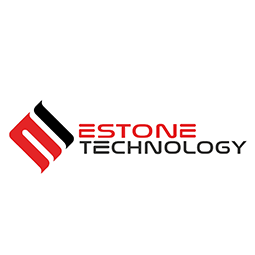5 Essential Elements of Rugged Tablet Technology

Computing is becoming essential even in remote, hard-to-reach places; rugged tablet technology enables connectivity and communication.
When people talk about the prevalence of computing, they usually don’t think of the fact that computers, today, are essential in war zones, areas struck by natural disasters, and tough environments like the Arctic or the Sahara where scientific research is being conducted. Most people are terrified of dropping, damaging, or getting water on their laptops, smartphones, and tablets. But how can a device survive when it’s just as likely to be hit by a bullet, dropped into floodwaters, or exposed to sub-freezing temperatures? That’s where rugged tablet technology comes in.
This whitepaper by Estone Technology deals with some of the essential features that are typically included in a ruggedized tablet or handheld computer. Estone designs and manufactures ruggedized and specialized tablets and panel PCs for industries that require them. These hardened computers are designed specifically to reliably perform in tough conditions.
Both the external casing and the internal components are designed to withstand and operate consistently in the face of shock, vibration, extreme temperatures, wet or dusty conditions, abrasion and corrosion, low pressure and altitude, ingress, noise, electromagnetic interference, and minimal size, weight, and power (SWaP). Rugged tablets and laptops can be found in the military, healthcare, manufacturing, public safety, field service, and agriculture industries. They are also increasingly being used by outdoorsmen and others engaged in recreational and non-work activities.
Typical features of rugged computers include less cabling, more heat sinks, additional liquid cooling, electronic components that can deal with more extreme operating temperatures than average components, fully sealed keyboards, and screens that are more resistant to damage than typical commercial LED and touchscreens. Rugged computers also usually have a lower failure rate on wireless transmissions than typical computers due to multiple radios and the use of a mobile virtual private network (VPN) that keeps the wireless connection up during the back-and-forth between wireless local area networks (WLAN) and wireless wide area networks (WWAN).
The whitepaper explains how the technology of ruggedizing tablets has been beneficial by bringing information and connectivity to many industries and to the most extreme conditions around the world. Estone Technology has developed rugged tablets with the most essential elements, and this whitepaper tells you what they are and what makes them so important to rugged tablets.
One of the essential elements of rugged tablets named in this whitepaper is 4G LTE cellular connectivity—the latest, most-reliable standard for wireless network and internet connectivity. 4G LTE cellular connectivity provides the benefit of high-speed internet connectivity as long as the device is in range of a cell phone tower/signal. The ability to access a cellular network ensures cloud connectivity and provides security that other connection solutions such as WiFi cannot.
A second essential element for rugged tablets is a screen that is readable in all lighting conditions, especially full sunlight. This whitepaper discusses the ideal level of brightness for rugged tablets as well as film coatings that improve and ensure visibility in numerous environments.
Third, rugged tablets usually are equipped with a built-in barcode scanner and quick response (QR) code scanner. Many jobs that require ruggedized devices involve regular cataloging and inventory-keeping tasks. In warehouses, hardware shops, and big retail stores, managing inventory often requires climbing scores of feet into the air to stock, unstock, and label products. Devices used in these environments are susceptible to being dropped from great heights or crushed by-products or heavy pallets. Ruggedized devices equipped with barcode and QR readers aid many industries.
A fourth essential element necessary in rugged tablets is a dock for charging, data transfer, and USB connectivity. Getting data from a mobile device to a stationary PC and/or to partners around the globe is crucial. Docks also allow for peripheral hardware, such as printers, mice, Ethernet, and larger display monitors to be connected to the tablet.
The final essential element in the development of rugged tablets is ensuring that each tablet is tested for durability by military standards. Off-the-shelf devices aren’t required to meet these standards, however, military code establishes the guidelines of tests that can be carried out to determine if a device is rugged enough for use by armed forces.
If a rugged, multi-functional tablet or handheld device is essential in your line of work (or play), this whitepaper by Estone Technology is essential reading.
